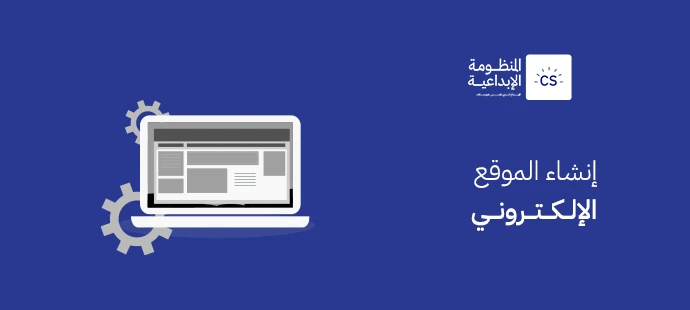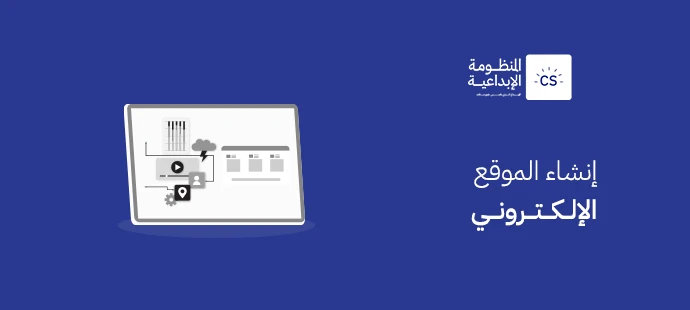Create a website
Create a website
667 Views | 1 second ago | Published On: July 31,2025 - Last Updated: December 22,2025

Content
Learn how to create a professional website that reflects your identity, showcases your project, and takes you to the next level. Clear steps for planning, design, interaction, and security in the digital business world.

As businesses race towards digital openness, creating a website has become more than just a facade; it's the first gateway to trust, the first impression, and the communication tool between you and your customers.
If you want to launch your project globally, creating a website is the cornerstone of getting customers to know you and spreading you globally.
In this article, we'll review the most important steps and foundations for creating a website, as well as any questions you may have.
How important is a business website in the digital age?
It is consideredCreating a website is important for businesses in the digital age, as it has become an integral part of daily life. The website is the face of your business to the world, and it is the first thing a customer looks for to learn about your services or communicate with you.
Therefore, having a website gives you some advantages, the most important of which are:
- Credibility and professionalism: Many customers trust companies that have a website more.
- Always accessible as your site is open 24/7 even if you are asleep it is there to answer your customers' questions.
- Expand your market and reach as the website helps you deal with new customers both locally and internationally.
- Accurate analytics: You can understand visitor behavior, interests, and visitor sources to make decisions that help you build a customer base and benefit greatly from them.
Therefore, creating a website is the cornerstone of building a new market, new customers, and greater exposure for you in local and global markets.
What are the basic steps to creating a website from scratch?
Creating a website begins with planning and goes through several integrated stages as follows:
- Determine the purpose of the site
- - Is it a website that showcases your business? An online store? A personal blog or an educational website?
- Choosing a domain name
- - Choose a name that expresses your activity and is easy to pronounce and remember.
- Buy hosting
- Hosting is where your website files are stored, so you should choose a hosting provider that provides you with high loading speeds, good technical support, security, and stability.
- Choosing a platform or content management system (CMS)
- You can choose between (Word Press), which is the most popular for websites, or Shopify or WooCommerce for stores.
- - Custom design using HTML/CSS/PHP if the site is complex
- Website Interface Design (UI/UX)
- - Choose an interface that reflects your brand or the purpose of the site, but you must ensure ease of navigation, clarity of information, and responsiveness on all devices.
- Create basic pages such as:-
- - Who we are
- - Services or products
- - Contact us
- Frequently Asked Questions
- Content writing
- - Write clear, professional content that follows search engine optimization (SEO) and must focus on keywords, attractiveness, and a style appropriate to your audience.
- Test the site before launching
- - Ensure the download speed is good, there are no errors in the links, and the site appears properly on the phone and computer.
- Linking the site to search engines and analysis
- - Google Analytics (visitor analysis)
- - Google Search Console (site performance in search results)
- - Activate SSL certificate (to protect user data)
- Website launch and promotion
- After ensuring its readiness, launch the website and promote it through social media platforms and paid advertising campaigns.
What is the difference between designing a website using ready-made templates and custom design?
When creating a website, there are two main design methods: using a ready-made template or designing a custom website. Here is the difference between them:
- Ready-made templates:-
- - These are pre-made designs that can be modified to suit your business.
- - Cheaper in cost.
- - Fast implementation.
- - Easy to use.
- But it has some disadvantages, which are:
- - Limited specialization
- - It is similar to other sites because one template is used for more than one site.
- - Sometimes the template has features you don't need, which affects the site's speed.
- Custom design
- - Built from scratch from design to programming
- - It has complete design flexibility and reflects your identity.
- - Improve performance and speed as needed.
- - More suitable for large and sophisticated projects.
- But it has some disadvantages:-
- - Higher cost because it requires designers and developers.
- - Longer implementation time, which may take months.
- - Usually requires professional maintenance.
Which one do you choose?
Choose ready-made templates if you are starting with a small project or on a limited budget.
As for the specialized design, if you are looking for distinction and have a larger budget.
This is what we offer you in the creative system: the design that suits you best and with the highest professionalism.
What are the types of websites? And how do you choose the right type for your business?
There are many types of websites, and here are the most common:
- Business Website
- - Used to display information about the company or project.
- - Suitable for small businesses, clinics, engineering offices, lawyers.
- E-commerce
- - Allows selling products or services online with payment and shipping options.
- - Suitable for commercial projects, shops and home projects.
- Blog
- - Based on written content: articles, reviews, recipes, diaries.
- - Suitable for writers, researchers, etc.
- Personal Website / Portfolio
- - Showcases a person's skills, resume, or work.
- - Suitable for photographers, designers, programmers, freelancers.
- News/Media Site
- - Publishes regular content of news, articles, reports, and videos.
- - Suitable for newspapers and news channels.
- Forum / Community
- - Allows users to interact, discuss and ask questions.
- - Compatible with educational platforms and support communities.
- Educational Website / LMS
- - Provides educational content, courses, tests, and memberships.
- - Suitable for schools and training platforms.
How do you choose the right type for your business?
- To choose the right type for your business, you should ask yourself several questions, the most important of which is: what is the purpose of the website? Displaying information, selling products, sharing articles, and so on.
- Define your audience: Are they customers? Students? Readers? Businesses?
- Think about the content you will provide regularly.
- Compare your budget to the requirements of each type.
- Ask us in the creative system what the best solution for my business is in the long term.
How to choose a suitable and effective domain name?
A domain is the name of your website on the internet. It is the first thing a customer sees and one of the most important elements to consider when creating a website. Choosing a suitable and effective name makes a big difference in visibility. Here are the most important tips for choosing a suitable and effective name:
- Be easy to remember.
- As short as possible.
- Free from complex symbols and numbers.
- Reflects your business or brand.
- Choose the appropriate extension (.com, .sa, etc.).
- Check name availability.
- Make sure the name is not similar to well-known brands.
Can you manage the site yourself or do you need a permanent developer?
The answer depends on the type of website you're using, the platform you're using, and its complexity. Some websites can be fully managed by the project owner without any programming experience, while others require ongoing technical support.
You can manage the site yourself if you use easy systems like Wordpress.
Your need for a permanent developer is if you are using a website built with a custom design from scratch (HTML, CSS, JS, PHP).
In conclusion, we've reviewed the basic pillars of creating a professional website that reflects your project's identity and provides your customers with a seamless and distinctive experience.


